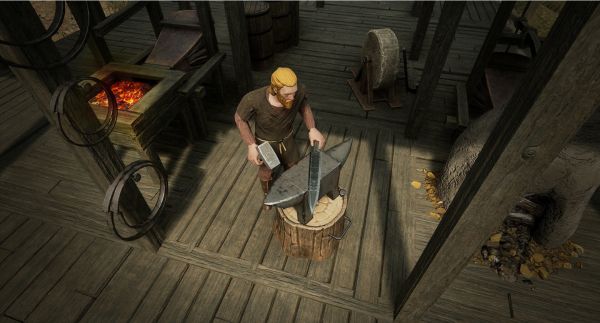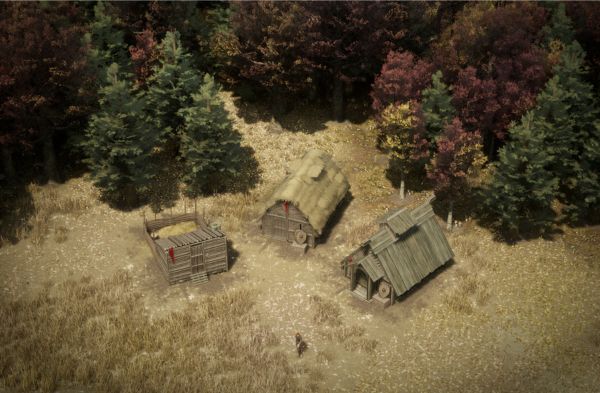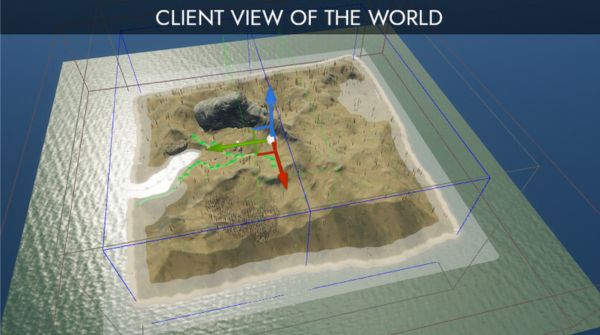Originally posted on Steam on April 28, 2023. We are catching up on the backlog and will eventually post the devblogs here as they are published.
Disclaimer: Features discussed in this post reflect what is currently under development and not necessarily what will be shipping with the next test. Anything mentioned below may change at any time due to the experimental nature of Pre-Alpha development. Nothing mentioned here should be taken as a promised feature or additional to the eventual game.
Blacksmithing
If you read our previous blog post, you'll know that many activities in the current Pre-Alpha build are temporary features that will be replaced with more comprehensive gameplay in the future. One of the first activities that will be moving to the experimental stage will be Blacksmithing.

Blacksmithing will be a process that involves a chain of tasks necessary to forge weapons, tools, and other equipment. This process will start out slow and inefficient, requiring effort to craft even a single sword. As a settlement and it's supporting infrastructure is developed, blacksmiths will become more efficient and capable of mass producing weapons for armies.
The first part of the process will involve building out an industrial area within your settlement. This involves placing down foundations that will form the workshop where your Anvil, Forge, Quenching Station, and other equipment will reside. These will be modular structures so players will have the freedom to lay them out however they wish within their workshop.

To forge a weapon like a Sword, the basic steps will be to smelt your iron at a Furnace, heat your Ingots at a Forge, shape your ingots into a Blade at an Anvil, and then cool your blade at a Quenching Station. There will be different types of Blades for different types of weapons (e.g. Sword Blades, Axe Blades, etc). In the current experimental version of the process, how you heat your Ingots and quench your Blade will impact the quality of your Blade. Higher quality Blades will result in higher quality weapons. In future Pre-Alpha iterations, more advanced methods of blacksmithing will be introduced. Stay tuned!
Multi Tenant Housing
We've only run one official Pre-Alpha test, but we've already gotten a lot of great feedback from the community. Much of it isn't actionable yet as the features they are based are going to change drastically in the future. However, one big piece of feedback that has been critical and relevant enough to action has been House distribution within Settlements.

In Anvil Empires, every player must build or claim a House in order to join a Settlement. While we are looking to make this system more sophisticated in the future, even now this is a foundational part of the gameplay as you can't do much without being part of a Settlement. One of the issues that was encountered during initial tests was that the Houses were occupying too much space within Settlements.
As a first step towards addressing this, upgraded Houses can now accomodate multiple players. While a basic Hut can still only house one player, a Thatched House can house two, and a Wood House can house three. Each player will have their own separate inventories for storing a few personal items. In addition, the names of occupants are now shown on the UI so it's easy for players to tell who they are sharing a house with.

In the future we have a lot of exciting plans on how to expand on the Housing model to further encourage collaboration within a Settlement.
Large World Tech
While current Pre-Alpha tests have taken place on a temporary test map that is relatively small, we are internally developing the rest of the world which will be much more expansive. One critical piece of tech that we're working on is the ability to divide the world up into "regions" and farm them out to multiple R2 server instances to simulate. This is what will ultimately allow many thousands of players occupy a vast world spanning an entire continent filled with seas, mountains, rivers, islands and more.

In Foxhole, this technical problem was solved by creating multiple map assets and stitching them together. A lot of time and effort was put into ensuring that the edges of each map would visually match the edges of neighbouring region maps. When the player walked to the edge of a region, the neighbouring region map would load in so that it's landscape and environment could be viewed. At any given moment the client would have it's own region map and one or more adjacent region map assets loaded in memory.
With Anvil, there is no concept of separate map assets being stitched together. Rather, the world will consist of one giant map. The R2 Engine automatically partitions the world into a grid and distributes each cell to a separate R2 server instance for simulation and networking. From the client's perspective though, the world is one giant continuous map. Now to be very clear here, this doesn't mean that the simulation can occur seamlessly across the entire world. Like Foxhole, the simulation will still be divided into regions separated by virtual borders meaning you can't arbitrarily shoot projectiles or interact with objects across regions. However, having the entire world on the client does provide many benefits, such as the potential to provide the experience of walking seamlessly between regions without loading screens under the right conditions. We are still developing this technology so don't expect this sort of polished experience off the bat but the base technology does provide this kind of potential for the future.

From the workflow perspective, not dealing with map stitching affords us a lot of benefits in development. If we want to change the size of the area being simulated by an R2 server we can simply tweak some parameters instead of having a level designer spend weeks modifying map assets across the world. To picture how this works, imagine a giant grid overlaid across one large world where each cell is simulated by an R2 server instance. This grid can be dynamically scaled up and down offline, creating more or less cells without having to modify map assets. This will effectively allow us to easily experiment with different sizes over time to find the optimal area to R2 instance ratio.
Be sure to add Anvil Empires to your wish list on Steam. If you want to join the community, head over the to official Discord server or Subreddit.



